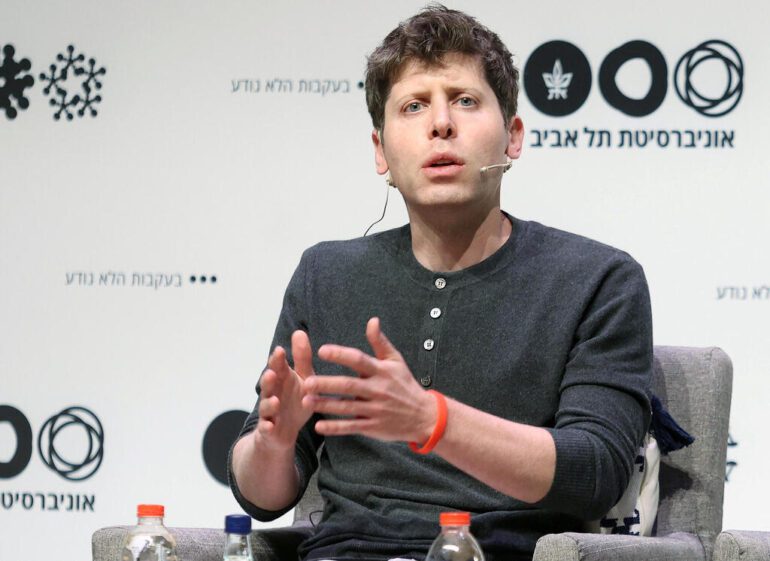TL;DR:
- Microsoft appoints Sam Altman and Greg Brockman to lead a cutting-edge AI research team.
- Emmett Shear becomes the new CEO of OpenAI.
- Microsoft commits to its partnership with OpenAI, emphasizing innovation and support.
- OpenAI’s complex corporate structure and recent developments are explained.
- Sam Altman’s swift departure sparks questions about transparency and accountability.
- Investors, including Microsoft, press for Altman’s reinstatement amid concerns of value decline.
- The need for a reevaluation of OpenAI’s organizational framework is highlighted.
Main AI News:
In a strategic move that has sent shockwaves through the tech industry, Microsoft CEO Satya Nadella announced the recruitment of former OpenAI CEO Sam Altman and tech visionary Greg Brockman to helm a groundbreaking AI research team. This development follows closely on the heels of Emmett Shear’s anticipated appointment as OpenAI’s new CEO, further cementing the partnership between Microsoft and OpenAI.
Nadella expressed his optimism about this collaboration, stating, “We remain steadfast in our commitment to OpenAI and our shared vision for the future of artificial intelligence. Microsoft is well-equipped to propel our product roadmap forward, continuing to drive innovation in line with our announcements at Microsoft Ignite. We are excited to work closely with Emmett Shear and OpenAI’s new leadership team. Furthermore, we’re thrilled to reveal that Sam Altman and Greg Brockman, alongside their accomplished colleagues, will spearhead a cutting-edge AI research team at Microsoft. We’re fully dedicated to providing them with the resources necessary to achieve unprecedented success.”
The recent upheaval surrounding Sam Altman’s removal from the helm of OpenAI and subsequent efforts to reinstate him have cast a spotlight on the intricacies of the company’s management and control mechanisms. These complexities stem from an innovative yet complex corporate structure.
Founded as a non-profit organization in 2015, OpenAI’s mission was to advance artificial intelligence for the greater good, without being solely profit-driven. Its unique structure aims to ensure responsible AI development, free from the constraints of short-term financial gains.
However, as operational costs continued to mount, OpenAI underwent a transformative change in March 2019. This transformation led to the creation of a subsidiary called OpenAI Global, designed as a “capped-profit” entity. This new company attracted substantial investments, most notably a one-billion-dollar infusion from Microsoft, which later expanded to an additional ten billion dollars in 2023. This investment granted Microsoft a 49% ownership stake in OpenAI Global. Notably, the term “capped-profit” in this context means that Microsoft could potentially earn up to 100 times its initial investment, translating to a maximum return of $1 trillion.
Under the terms of this investment, Microsoft held minority shares in OpenAI Global and adhered to unconventional governance conditions. Instead of having a traditional board of directors, the company answered to a non-profit organization dedicated to preserving the mission’s integrity, free from profit-driven motives. Microsoft, despite its substantial financial involvement, did not secure a seat on this board, which partly explains its limited knowledge of Sam Altman’s abrupt departure.
This intricate corporate framework played a significant role in the departure of OpenAI’s co-founders, Elon Musk and Dario Amodei, who ventured into creating competing organizations with non-profit orientations. The schism emerged from fundamental disagreements over OpenAI’s shift toward profit-centric strategies and the intensifying competition in the AI landscape.
The pivotal moment arrived during a recent developer conference, where Sam Altman unveiled market-oriented initiatives, including the concept of an AI app store, despite purported cautionary advice. Behind closed doors, Altman explored the possibility of selling shares in OpenAI Global at a staggering $90 billion valuation. These actions raised concerns about the pace of change, escalating competition, and overall accountability.
Sam Altman’s sudden departure rekindled the underlying question: Can a for-profit entity, operating under the oversight of a non-profit organization, remove its leader responsible for substantial financial value creation? Investors, including tech giants like Microsoft, Tiger Global, Sequoia Capital, and Thrive Capital, reportedly exerted pressure on the board to reinstate Altman, fearing not only a decline in the company’s value but also the potential exodus of key executives.
While speculation abounds regarding the exact reasons behind Sam Altman’s dismissal, the convoluted corporate structure raises valid concerns about transparency and accountability. Altman’s assertion that he would advocate for significant governance changes if reinstated underscores the pressing need for a thorough reevaluation of OpenAI’s intricate organizational framework.
Conclusion:
Microsoft’s strategic move to enlist former OpenAI CEO Sam Altman and tech visionary Greg Brockman to lead a groundbreaking AI research team reflects a significant development in the AI market. It underscores Microsoft’s commitment to driving innovation and maintaining a strong partnership with OpenAI. However, the intricate corporate structure and questions surrounding Sam Altman’s departure raise concerns about transparency and governance, suggesting a potential need for a reevaluation of organizational frameworks in the AI industry.

